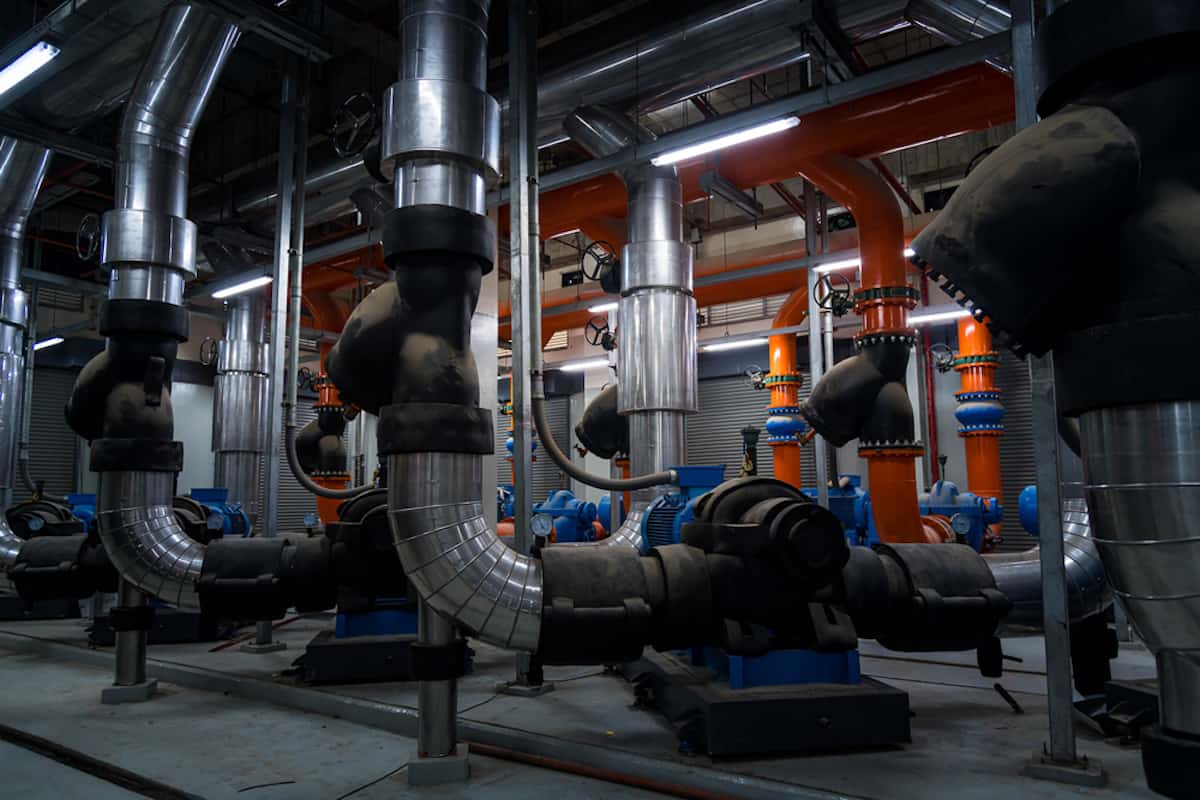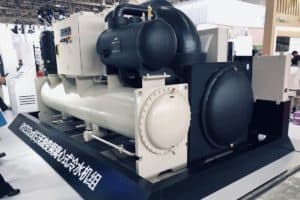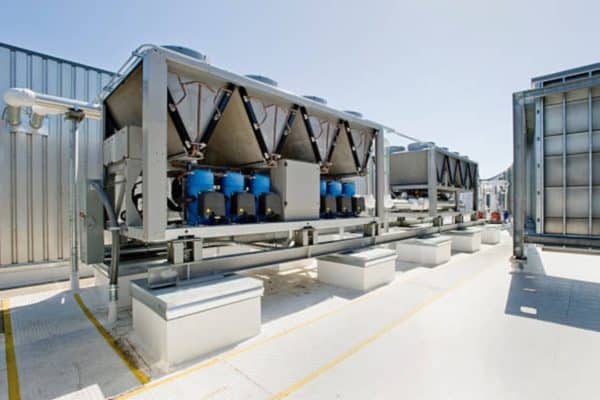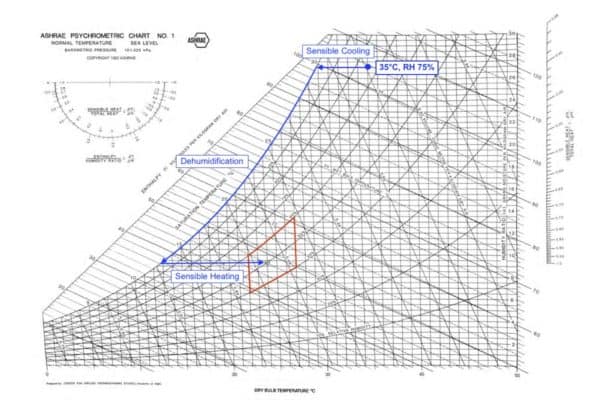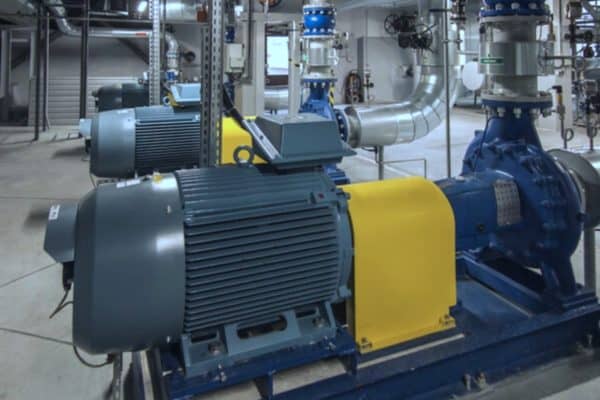5 Types of Pumps in HVAC (Common Terms Explained)
Pumps are widely used in HVAC. By default, pumps are machines that move water. However, the word pump can mean several things in HVAC. So, what are the different types of pumps in HVAC?
Generally, there are 5 common types of pumps in HVAC as follow:
- Chilled Water Pump
- Condenser Water Pump
- TES Pump
- Drain Pump
- Heat Pump
Technically, there are only a few pump types. However, many people get confused by the terms that the word “pump” is attached to. So, let’s understand the different types of pumps in HVAC once and for all.
1. Chilled Water Pump
Chilled water pump is the centrifugal pump that circulates the closed-loop chilled water of the chilled water system from the chiller to the air handling unit.
Most of the time, there are only two types of chilled water pumps; a) end suction and b) horizontal split casing. Both the end suction and horizontal split casing type are the centrifugal type.

The centrifugal type of pump is referring to the way the pump moves the water. Meanwhile, the end suction type and the horizontal split casing type refer to the construction of the pump.
In HVAC, a single unit of chilled water pump is often required to move around 1000-2000 gpm of chilled water at around 20-40 meters of head depending on the pump design and building load.
Generally, the end suction type of chilled water pump is preferred for low water flow and low head applications while the horizontal split casing type is used for large water flow and high head applications.
Nonetheless, chilled water pumps can also be the vertical split casing type when there is limited space.
2. Condenser Water Pump
Condenser water pump is the centrifugal pump that circulates the open-loop condenser water of the chilled water system from the chiller to the cooling tower.
The type of pump used as the condenser water pump is similar to the type of pump used as the chilled water pump which is either the end suction type or the horizontal split casing type.
As a result, the condenser water pump is the centrifugal type of pump.
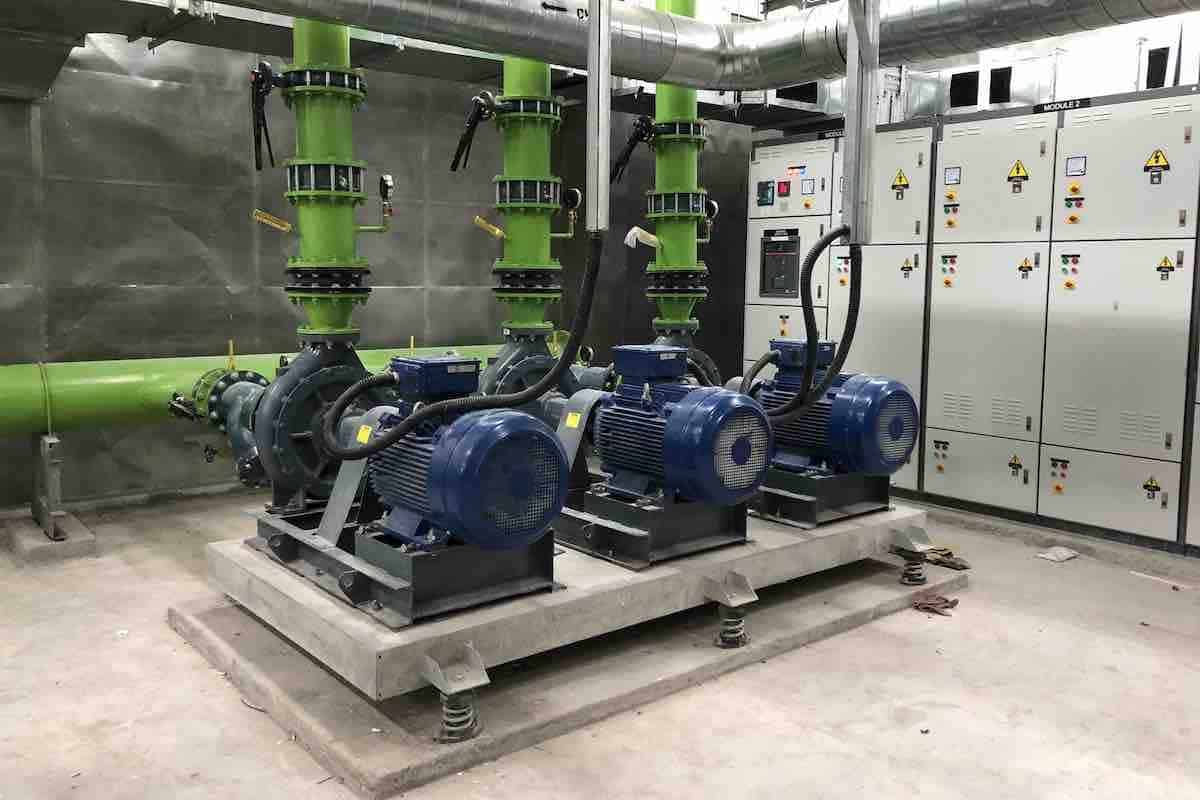
In HVAC, a single unit of condenser water pump is often required to move around 1700-3400 gpm of condenser water at around 15-30 meters of head depending on the pump design and building load.
Generally, the pump head of condenser water pumps is lower than chilled water pumps because the latter is a closed loop system that involves more components and thus, the friction loss is higher.
Again, other types of pumps can be used as the condenser water pump but the end suction and the horizontal split casing are the most common ones.
In the meantime, I would like to inform you that you can learn quicker by getting my HVAC Begin (eBook) if you’re a beginner. But, if you have a year or two of experience, then I would suggest you consider my HVAC Basics (eBook). Nonetheless, I encourage you enroll in my HVAC Beginner Course: 10 Days to Become Competent in HVAC if you want to equipped yourself with a complete set of basic HVAC skills.
HVAC Beginner Course
Learn the most basics and foundational HVAC skills including cooling capacity calculation, equipment selection, duct sizing, pipe sizing, exhaust fan sizing, controls, electrical and more.
3. TES Pump
TES pump only present in district cooling systems that used thermal energy storage (TES) tanks. The chilled water system in commercial buildings doesn’t require the TES pump.
TES pump stands for thermal energy storage pump. As the name suggests, TES pumps are used to circulate chilled water from the chiller to the TES tank.
In addition, TES pumps can also support the chilled water pumps in district cooling to supply the chilled water from the district cooling plant to the respective buildings.
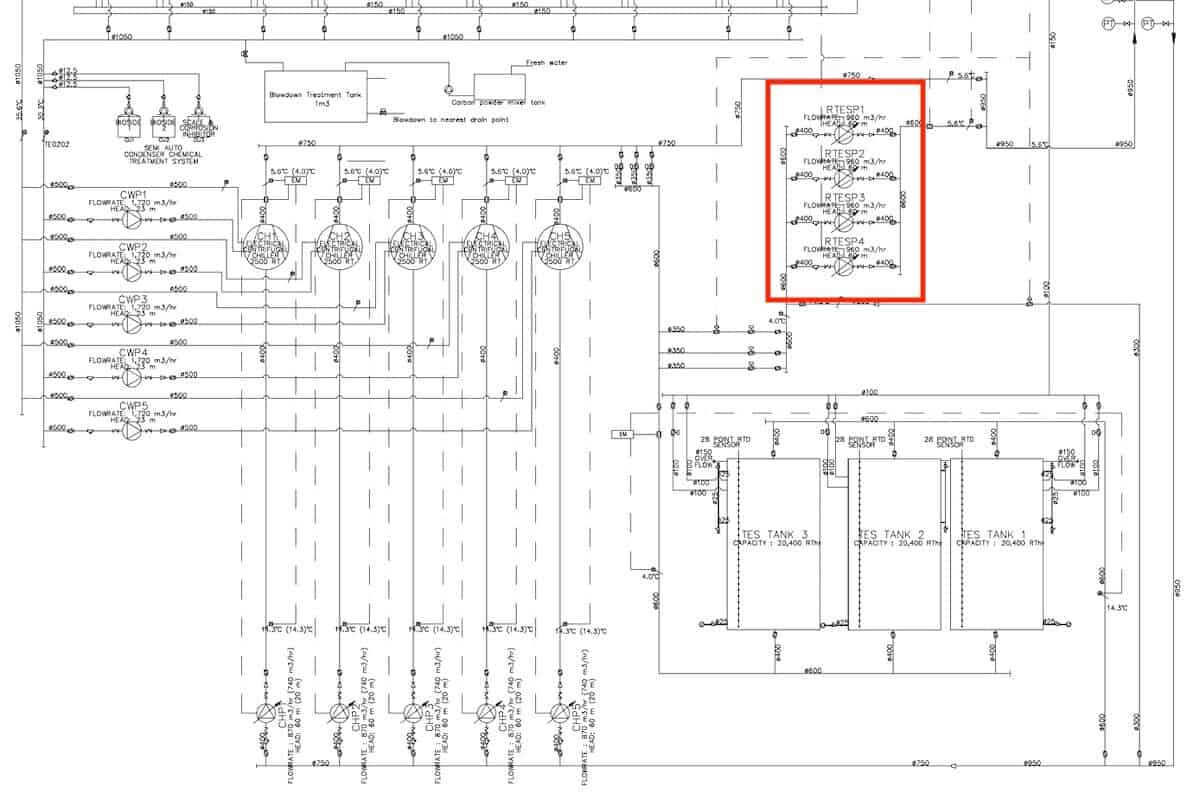
Most of the time, the type of pump used as the TES pump is the horizontal split casing centrifugal type of pump because district cooling often involves a large volume of chilled water.
However, if the district cooling system is smaller, the type of pump used as the TES pump can be the end suction centrifugal type of pump.
Often, the water flow and pump head of the TES pump is about the same as the chilled water pump in district cooling because the TES pump may need to provide sufficient chilled water independently based on the design.
4. Drain Pump
Drain pump is a small submersible pump used to discharge the condensate water produced by air conditioners. It is most commonly found in residential air conditioners.
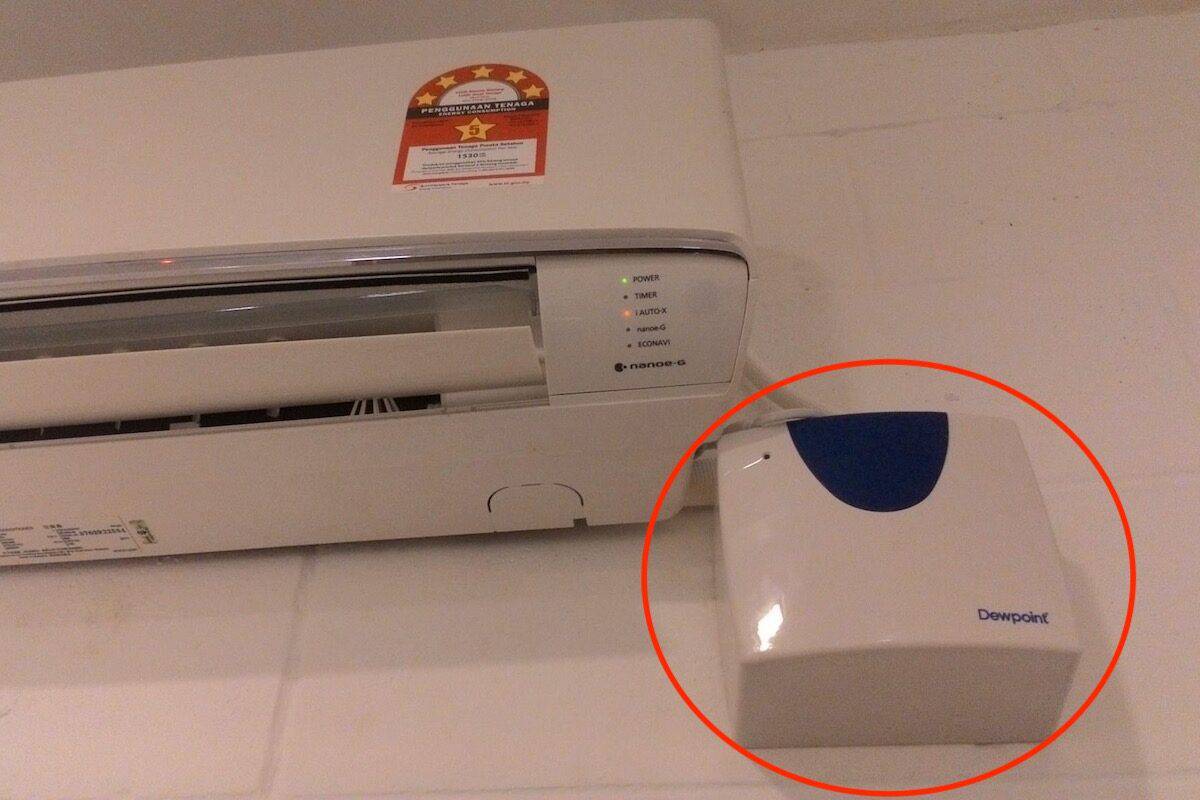
By default, the ceiling cassette type of air conditioner has a built-in drain pump. Hence, its drain pipe needs to be raised in order to create a position suction pressure for the drain pump.
Wall-mounted air conditioners don’t have a built-in drain pump. However, if they are installed at a location where the condensate water is unable to discharge via gravity, an external drain pump can be installed nearby to pump out the water.
5. Heat Pump
Heat pump is a machine that uses the refrigeration cycle for comfort heating and cooling. A heat pump is not a pump that is conventionally known for moving water.
A heat pump is basically an air conditioner that operates in reverse. While air conditioners provide cooling, heat pumps provide heating.
However, most heat pumps are able to provide cooling by simply reversing their refrigeration cycle.

In HVAC, heat pumps have two types; a) air-to-air heat pump and b) air-to-water heat pump. Air-to-air heat pumps extract heat from the ambient air to provide heating. Meanwhile, air-to-water heat pumps extract heat from either the chilled water or the condenser water to provide heating.
Heat pumps are also used in hot water systems. For hot water applications, air-to-air heat pumps and air-to-water heat pumps are better known as air source heat pumps and water source heat pumps.
Air-to-air heat pumps can be used to provide heating to the indoor air as well as produce hot water for dishwashing and showering. On the other hand, air-to-water heat pumps are mostly used to produce hot water for dishwashing and showering only.
Conclusion
As far as the type of pump goes, there are technically two common ones which are the end suction type and the horizontal split casing type. Nonetheless, the above explained other forms of pumps commonly found in HVAC so that people understand more about the different types of pumps in HVAC.
Lastly, consider my HVAC Begin (eBook) if you’re a beginner and you want to have a foundational knowledge in HVAC. But, if you have a year or two of experience, then I would suggest you consider my HVAC Basics (eBook). Nonetheless, I encourage you enroll in my HVAC Beginner Course: 10 Days to Become Competent in HVAC if you want to equipped yourself with a complete set of basic HVAC skills.
HVAC Beginner Course
Learn the most basics and foundational HVAC skills including cooling capacity calculation, equipment selection, duct sizing, pipe sizing, exhaust fan sizing, controls, electrical and more.
If you have anything to add (or ask) about this topic, leave a comment down below!


